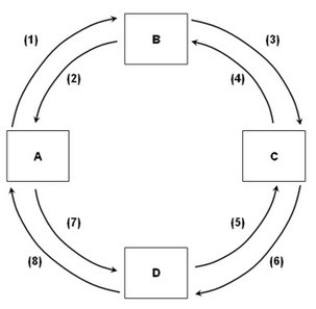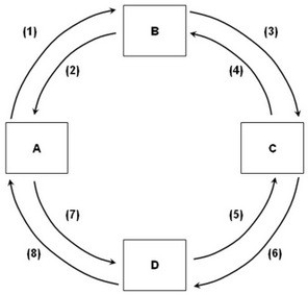A) Capital accumulation is generally insufficient because consumers don't directly cast dollar votes for capital goods.
B) The invisible hand directs the production of consumer goods, but government planning is required to effectively allocate resources to capital goods.
C) Capital good production is the primary driver of the demand for consumer goods.
D) Entrepreneurs and business owners cast dollar votes for capital goods based on the profitability of goods and services they sell to consumers.
F) A) and C)
Correct Answer

verified
Correct Answer
verified
Multiple Choice
Which of the following statements best describes production outcomes in the Soviet Union and pre-reform China?
A) Output was often low quality because production managers were rewarded only for meeting quantitative production targets.
B) Output was often high quality but insufficient in quantity because production managers were rewarded only for meeting quality standards.
C) Output was generally high quality and sufficient in quantity because of the well-specified economic plans.
D) Output was of variable quality but sufficient in quantity because market signals were only consistent in telling managers how much to produce.
F) A) and C)
Correct Answer

verified
A
Correct Answer
verified
Multiple Choice
 - Refer to the above figure. If flow (8) is revenues and flow (4) is economic resources (land, labor, capital, and entrepreneurial ability) , then box:
- Refer to the above figure. If flow (8) is revenues and flow (4) is economic resources (land, labor, capital, and entrepreneurial ability) , then box:
A) A is the resource market and box B is the product market.
B) B is the resource market and box A is the product market.
C) C is the product market and box B is the resource market.
D) D is the product market and box B is the resource market.
F) B) and C)
Correct Answer

verified
Correct Answer
verified
Multiple Choice
Which of the following statements is most accurate about the economies of North Korea and South Korea?
A) The economies of both North Korea and South Korea have grown at approximately the same rate since Korea was divided after World War II.
B) Since their division after World War II, South Korea has grown much faster than North Korea, but their GDP per capita remains roughly equal.
C) Since their division after World War II, North Korea's economy has achieved greater economic growth than South Korea.
D) Starting from similar economic positions prior to their division after World War II, South Korea's economy has grown to about 40 times the size of the North Korean economy.
F) B) and C)
Correct Answer

verified
Correct Answer
verified
Multiple Choice
Based on the Index of Economic Freedom provided by the Heritage Foundation, which of the following nations is considered least free?
A) New Zealand.
B) Colombia.
C) Argentina.
D) Japan.
F) B) and C)
Correct Answer

verified
C
Correct Answer
verified
Multiple Choice
Which statement best describes a command economy?
A) The production of goods and services is determined primarily by markets, but the allocation of goods and services is determined primarily by government.
B) The production of goods and services is determined primarily by government, but the allocation of goods and services is determined primarily by markets.
C) The production and allocation of goods and services is determined primarily through markets.
D) The production and allocation of goods and services is determined primarily through government.
F) B) and C)
Correct Answer

verified
Correct Answer
verified
Multiple Choice
Which of the following success indicators is present in a market system but lacking in a command system?
A) Production targets.
B) Wages.
C) Income distribution standards.
D) Profit.
F) A) and B)
Correct Answer

verified
Correct Answer
verified
Multiple Choice
Coordination problems have led to the failure of command systems. Which of the following best exemplifies this problem?
A) Managers had no incentive to address market surpluses or shortages, as long as they met production goals.
B) Workers were not motivated to work hard because of a lack of consumer goods to purchase.
C) Command economies try to minimize the use of capital goods, making production less efficient.
D) The complexity of production processes made it difficult to assure that all necessary inputs were provided at the right time and in the right amount.
F) A) and D)
Correct Answer

verified
Correct Answer
verified
Multiple Choice
 - Refer to the above figure. If box D represents the product market and flow (6) represents consumption expenditures, then box C is:
- Refer to the above figure. If box D represents the product market and flow (6) represents consumption expenditures, then box C is:
A) households, flow (7) is revenue, and flow (8) is goods and services.
B) businesses, flow (7) is revenue, and flow (8) is goods and services.
C) households, flow (7) is goods and services, and flow (8) is revenue.
D) businesses, flow (7) is goods and services, and flow (8) is revenue.
F) A) and C)
Correct Answer

verified
C
Correct Answer
verified
Multiple Choice
Since the end of World War II:
A) the economies of both North Korea and South Korea have grown at approximately the same rate.
B) both North and South Korea have adopted command economies.
C) North Korea's economy has achieved greater economic growth than South Korea.
D) the South Korean economy has grown faster than North Korea's economy.
F) C) and D)
Correct Answer

verified
Correct Answer
verified
Multiple Choice
Which statement best describes a capitalist economy?
A) The production of goods and services is determined primarily by markets, but the allocation of goods and services is determined primarily by government.
B) The production of goods and services is determined primarily by government, but the allocation of goods and services is determined primarily by markets.
C) The production and allocation of goods and services is determined primarily through markets.
D) The production and allocation of goods and services is determined primarily through government.
F) C) and D)
Correct Answer

verified
Correct Answer
verified
Showing 1 - 11 of 11
Related Exams